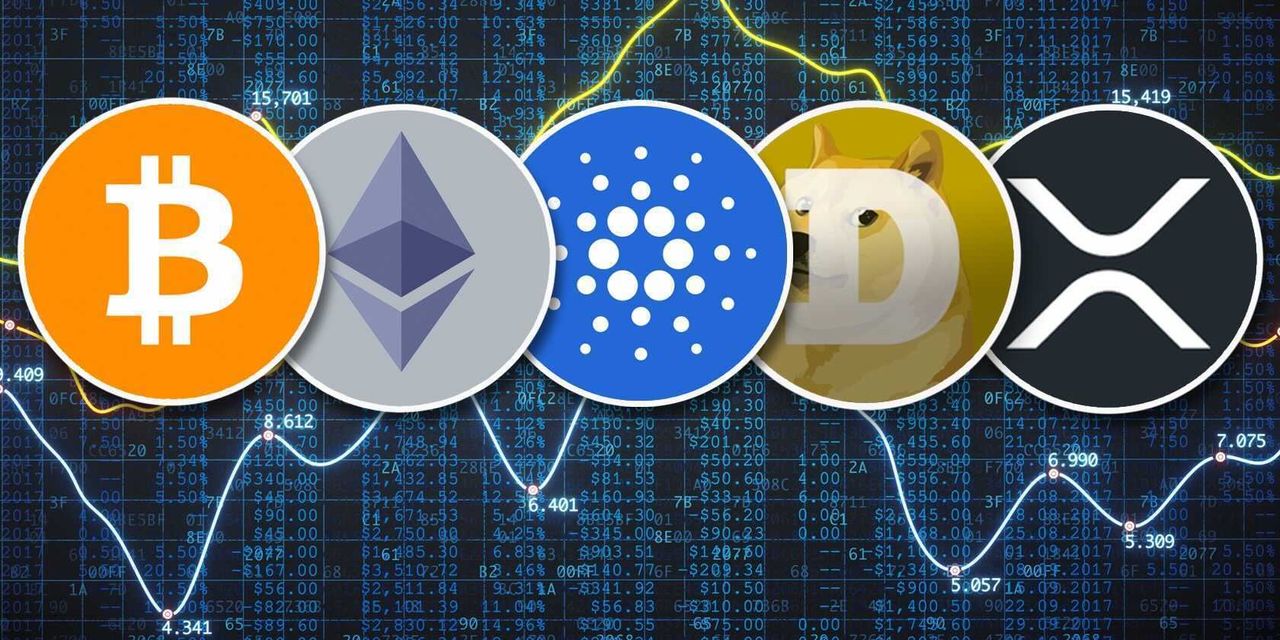Hi everyone, welcome back to another Distributed Ledger. This is Anushree Dave, crypto reporter at MarketWatch.
May is on track to become the first month in 2023 when NFT trading volume will fall well below $1 billion, according to new analysis from DappRadar. But brands, despite the low trading volume, are surprisingly still launching NFT collections.
As a reminder, NFTs, or nonfungible tokens, surged in popularity in 2021. It was exactly 2 years ago, in May 2021, when artist Beeple sold NFT digital art for $69 million. NFTs are unique cryptographic tokens that can be linked to digital or physical items. They’re backed on a blockchain, and serve as a digital certificate that verifies ownership and authenticity.
But with the hype fading around the metaverse, web3, and crypto, it seems that traders aren’t splurging on NFTs the way they used to. So why do brands keep launching collections? Read more below.
You can find me on Twitter at @anu__dave to share any thoughts on crypto, this newsletter, or your personal stories with digital assets.
Brands launch NFTs
This week, the famous toy company Mattel announced the launch of the Fast and the Furious NFTs, ahead of the release of the movie. Last month, Starbucks launched a new NFT collection, and Nike-owned RTFKT released a digital sneaker collection of NFTs, that LeBron James was later spotted wearing. Brands haven’t given up on their efforts to release nonfungible tokens.
But data shows that NFT trading volume is at an all time low this year.
“In the month of May, the NFT market has witnessed a significant shift. As of May 12th, the NFT trading volume has reached only $293 million,” said Sara Gherghelas, a blockchain analyst at DappRadar. “This implies that for the first time this year, the monthly NFT trading volume might fall short of the $1 billion mark.”
Trading in projects like Donald Trump’s NFTs, which sold out within 24 hours when it was first released in December, have plunged to an all time low, seeing an 80% drop from all-time highs, according to OpenSea data.
So why do brands keep launching them when the numbers seem to show that the trend of buying and trading NFTs is dying off? Because for the most part, launching NFTs is helping brands build a community of super fans. Many of the launches come with built-in perks that can’t be accessed through other means.
Mattel’s Fast & Furious project, for example, will give holders the opportunity to own a physical version of Suki’s car if they manage to collect the entire set. Starbucks NFTs reward and connect with members by offering collectibles, digital stamps, and access to exclusive benefits. As a result, the companies that launch these projects, still end up selling them. When Starbucks launched an NFT collection in March, it sold out within the first 20 minutes.
Other factors that are contributing to low trading volume have nothing to do with brands and include the rise in transaction fees, which can happen when there’s a short-term frenzy around a particular item that everybody is trading.
The recent rise of Pepe Coin, which we covered last week, has had this impact.
“There has been a noticeable trend of NFT traders offloading large NFT holdings at a loss, in order to join the frenzy surrounding Pepe,” said Gherghelas. “This surge in activity on the blockchain has subsequently led to a spike in transaction costs, which have exceeded $100 in some instances. This uptick in transaction costs has impacted the trading volume of low-value NFTs, as concerns about affordability have risen among traders.”
The question that remains, according to Gherghelas, is how the elevated transaction costs will shape the trajectory of the NFT market moving forward. It’s unclear if the dip in trading volume this month signals a larger trend or merely a temporary setback driven by short lived hype.
Crypto industry reacts to Department of Justice crackdown on crypto
The crypto industry is trying to figure out what to make of a crackdown by the U.S. Justice Department on crime on digital platforms. In an interview with the Financial Times, Eun Young Choi, the director of the department’s national cryptocurrency enforcement team, said that the DOJ is focusing on companies that enable crimes to happen or commit them themselves, such as money laundering.
Industry insiders say this is a good thing, but are concerned that too much enforcement without clear rules on how to regulate the space will cause companies to operate outside of the U.S. You can read the full story here.
Crypto in a snap
Bitcoin
BTCUSD,
rose 0.47% this week, and is trading at $27,084.70 as of Thursday afternoon. Ether
ETHE,
is up 0.82% in the same period, and trading at $1,811.48 as of Thursday afternoon.
| Biggest Gainers | Price | %7-day return |
| Render | $2.36 | 39% |
| Lido DAO | $2.20 | 29.6% |
| Conflux | $0.29 | 17.3% |
| Frax Share | $7.25 | 15.8% |
| Synthetix Network | $2.34 | 15.3% |
| Source: CoinGecko |
| Biggest Decliners | Price | %7-day return |
| XDC Network | $0.031 | -7.4% |
| Klaytn | $0.17 | -5.1% |
| Bitget Token | $0.45 | -4.0% |
| Tether Gold | $1,956 | -3.7% |
| Gate | $4.86 | -3.4% |
| Source: CoinGecko |
Must reads
Where’s Shaq? Lawyers for FTX Investors Struggle to Serve Him Papers [Wall Street Journal]
Crypto firm Ripple buys Swiss startup as SEC crackdown forces companies to consider overseas moves [CNBC]
EU states approve world’s first comprehensive crypto rules [Reuters]
Read the full article here


